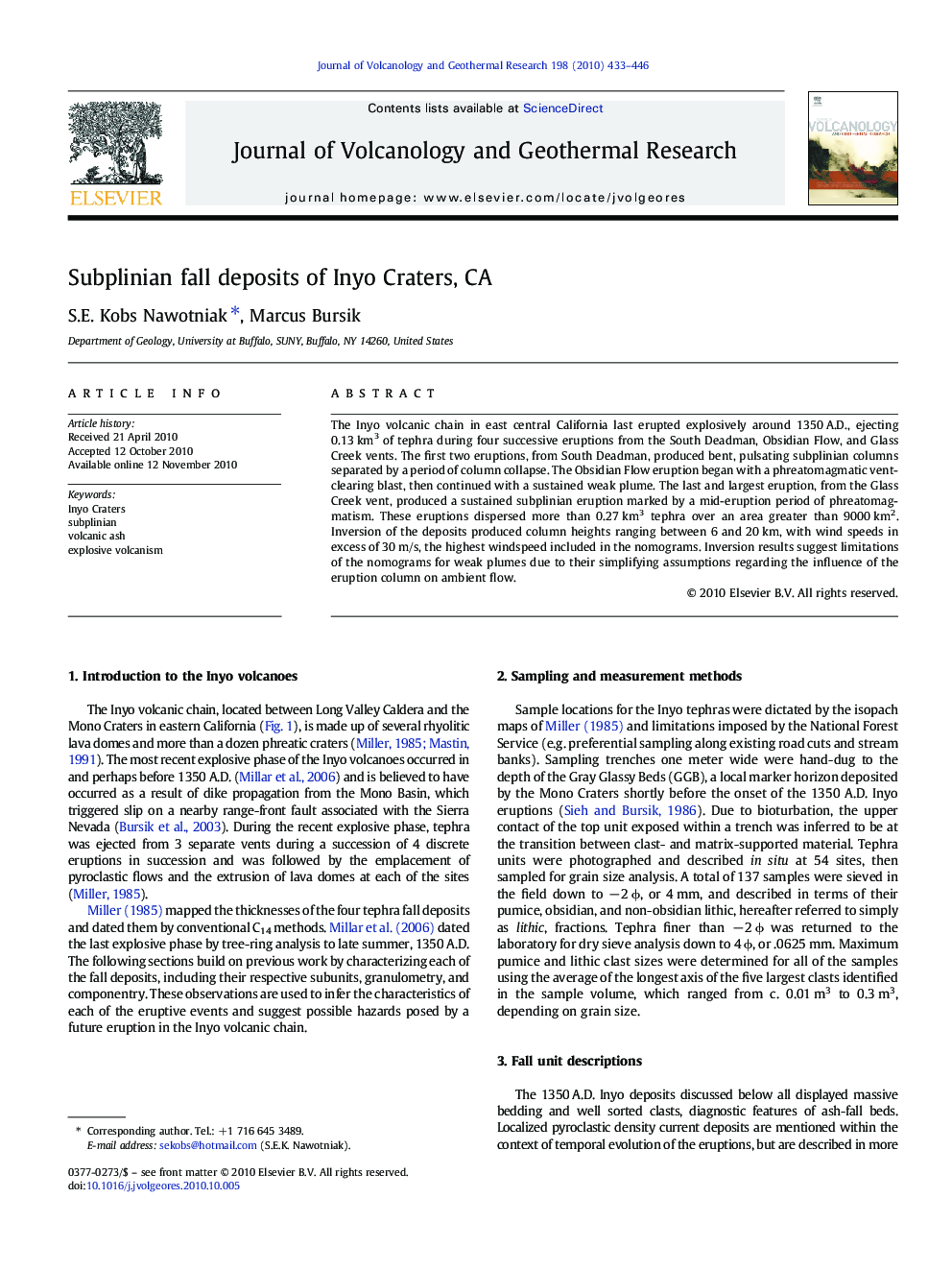| Article ID | Journal | Published Year | Pages | File Type |
|---|---|---|---|---|
| 4714178 | Journal of Volcanology and Geothermal Research | 2010 | 14 Pages |
The Inyo volcanic chain in east central California last erupted explosively around 1350 A.D., ejecting 0.13 km3 of tephra during four successive eruptions from the South Deadman, Obsidian Flow, and Glass Creek vents. The first two eruptions, from South Deadman, produced bent, pulsating subplinian columns separated by a period of column collapse. The Obsidian Flow eruption began with a phreatomagmatic vent-clearing blast, then continued with a sustained weak plume. The last and largest eruption, from the Glass Creek vent, produced a sustained subplinian eruption marked by a mid-eruption period of phreatomagmatism. These eruptions dispersed more than 0.27 km3 tephra over an area greater than 9000 km2. Inversion of the deposits produced column heights ranging between 6 and 20 km, with wind speeds in excess of 30 m/s, the highest windspeed included in the nomograms. Inversion results suggest limitations of the nomograms for weak plumes due to their simplifying assumptions regarding the influence of the eruption column on ambient flow.
Research Highlights► The fall deposits from the 600 yBP Inyo eruptions were mapped and described. ► One deposit came from an isolated blast, the others from subplinian eruptions. ► Inversion-based plume heights range between 6 and 20 km. ► Eruptions lasted minutes to hours, over little as one summer. ► Inversion results suggest weak nomogram description of bent plumes.
